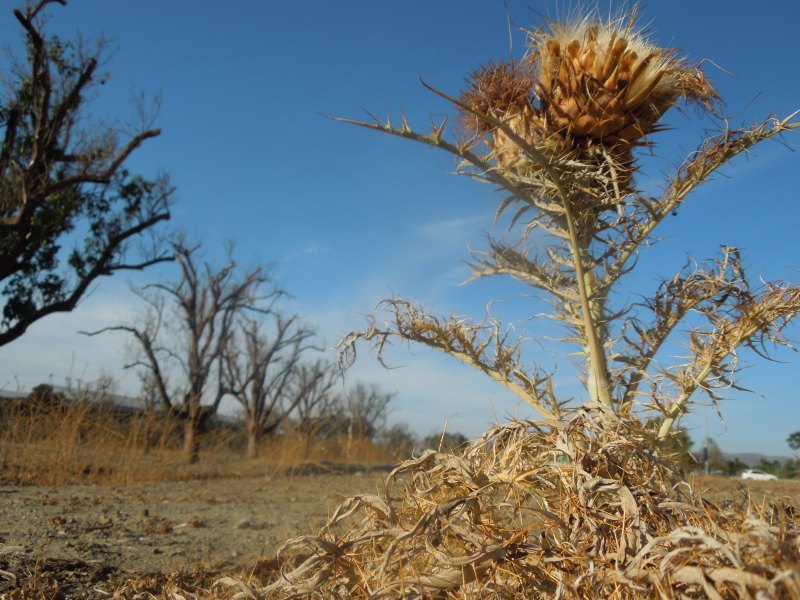Temperatures are up, and Stanford researchers are worried the record highs don’t bode well for the future of wildfire and drought in California. Though mitigating the effects of climate change is the only long-term solution, the researchers said there are short-term adaptations communities can make to stay safe.
This June, Stanford reached a high of 103 degrees Fahrenheit, with the Pacific Northwest recording widespread average highs over 100 degrees in the recent, record-breaking heatwave that enveloped the West. These highs are expected to continue: Having already experienced heatwaves this summer and a wildfire season that has outpaced last year’s record, the Bay Area and the West Coast are forecasted to endure more in upcoming weeks
According to Stanford researchers, this signal of climate change causes short-term problems, such as strained electrical grids and hospitalizations due to elevated temperatures, in addition to water shortages and pollution. In California, worsening drought conditions led governor Gavin Newsom to announce a voluntary 15% water use reduction. And in the long term, heat can exacerbate droughts and wildfires and threaten water reserves.
According to Stanford Woods Institute for the Environment director Chris Field Ph.D. ’81, battling the present effects of climate change — such as rising heat in Palo Alto — requires the combined resources of a community.
Solutions including early heat warning, public climate education campaigns, cooling centers and networking among community members to decrease hospitalizations are practical ways to “invest in adaptation,” which Field said is crucial to living with changing climates.
As such, Field said that Stanford should “recognize that we are part of a community in the local area, in California, in the U.S. and in the world,” which ranges from keeping active communication with neighbors to innovating market-based solutions to climate change.
“We’re not going to be in a situation where the new knowledge we develop has the impact it should have unless we’re out there working with people at all different levels,” Field added.
Field said that Stanford students have the ability to take on the effects of climate emergencies in the short and long terms. “We’ve seen so many examples of students being effective activists in climate change, both in terms of arguing for stronger policies and helping deliver emergency relief in places where we have disasters,” he said.
Field, who was a researcher on the United Nations’ Intergovernmental Panel on Climate Change (IPCC), said extreme heat has strong links to climate change. The IPCC found that a slight increase in average temperatures leads to a rapid surge in the number of heat waves and intensity of extreme swells.
In recent years, these jumps have become a persistent factor within climate models.
“Everything we’ve seen is very consistent with what the climate scientists have been projecting,” wrote David Lobell Ph.D ’05, an earth system science professor and director of the Center on Food Security and the Environment, in an email to The Daily. “We expect it to continue getting warmer in California as long as greenhouse gas concentrations keep increasing.”
Stanford’s Water in the West Urban Water Policy director Newsha Ajami said that rising temperatures and dry spells show that California is headed towards another difficult drought. This comes just a few years after the severe drought that ended in 2017, adding to California’s extensive history of water shortages.
“The question is how often may this happen again and again,” Ajami said. “Are we as a community prepared to deal with this conflict?”
Droughts affect more than just the availability of water, according to Ajami. Repeated dry periods in California have increased the length and intensity of wildfires, which can impact the water reservoirs communities depend on. “If a wildfire happens and there’s not enough time to clean it up, that can impact water quality,” she said, adding that sediment from wildfires can pollute usable, conserved water.
Ajami highlighted local and on-campus efforts to preserve water quality and collect usable water. One such example is implementing recycled water use for plumbing in campus buildings. “We also have a groundwater basin at Stanford that the community has been trying very hard to protect and reserve,” Ajami said.
The ongoing warming in regions across California threatens water infrastructure systems, which Ajami said are largely based on 20th-century climate patterns. “Because of climate change, we are experiencing very different things,” Ajami said. “Our normal has changed. Our normal now is a drier and hotter climate.”
With regard to the capacity to use short-term actions to build a more sustainable future, Ajami added that “we have to be very mindful of how we use our resources, because they are not limitless.”
According to Field, the key to addressing and decreasing the impacts of climate change is recognizing the weight of the current situation.
“Climate change impacts are upon us now, and we need to deal with them,” Field said. “By being smart about investing in climate solutions now, we can build a life that looks better for everyone in the future and that is more equitable, more just.”
